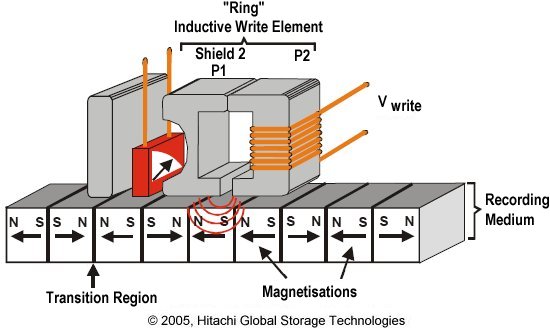For nearly 50 years, the disk drive industry has focused nearly exclusively on a method called longitudinal magnetic recording, in which the magnetisation of each data bit is aligned horizontally in relation to the drive’s spinning platter. In longitudinal recording, the fields between two adjacent bits with opposing magnetisations are separated by a transition region.

While areal densities have historically pretty much doubled every year,more recently however, the rate of increase has slowed, and the limit of areal densities for hard disk technology using longitudinal recording – due to the superparamagnetic effect – is now generally reckoned to be in the region of 100 to 200 Gbits/in2.
This has led to more aggressive approaches to delaying the superparamagnetic effect being sought, and the emergence of perpendicular magnetic recording (PMR) technology as a solution capable of doubling hard disk data densities in the relative short term and of ultimately enabling a more 10-fold increase in storage capacity over today’s technology.
- Hard disk (hard drive) construction
- Hard Disk (hard drive) Operation
- Hard disk (hard drive) format – the tracks and sectors of the hard disk
- File systems (FAT, FAT8, FAT16, FAT32 and NTFS) explained
- Hard Disk (Hard Drive) Performance – transfer rates, latency and seek times
- Hard Disk AV Capability
- Hard Disk Capacity
- Hard Disk Capacity Barriers
- Hard Disk MR Technology
- Hard Disk GMR Technology
- Hard Disk Pixie Dust
- Hard Disk Longitudinal Recording
- Hard Disk Perpendicular Recording
- RAID – Redundant Arrays of Inexpensive Disks
- Hard Disk SMART Drives
- Hard Disk MicroDrives
- Hard Disk OAW Technology
- Hard Disk PLEDM
- Hard Disk Millipede
- Guide to Western Digital’s GreenPower hard drive technology
- Solid state hard drive (SSD) technology guide